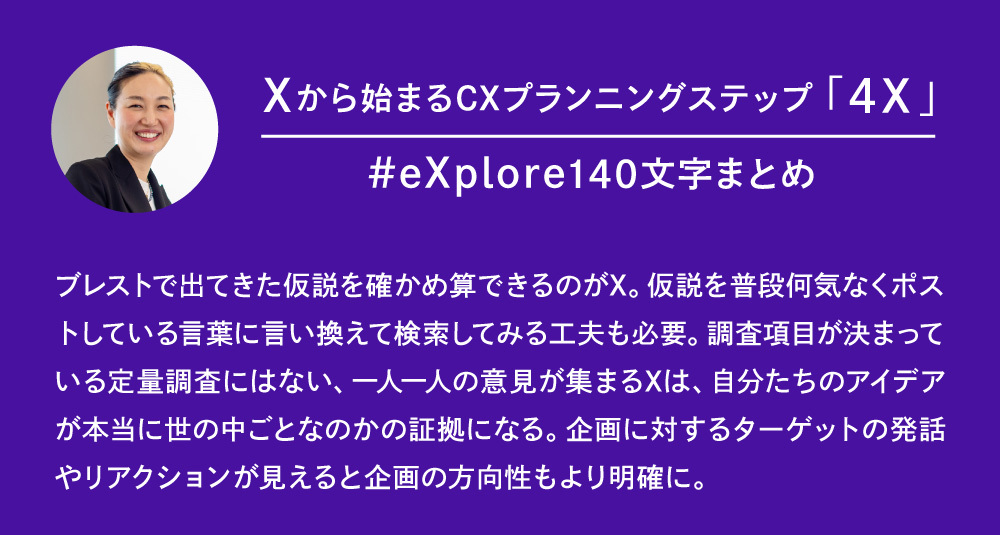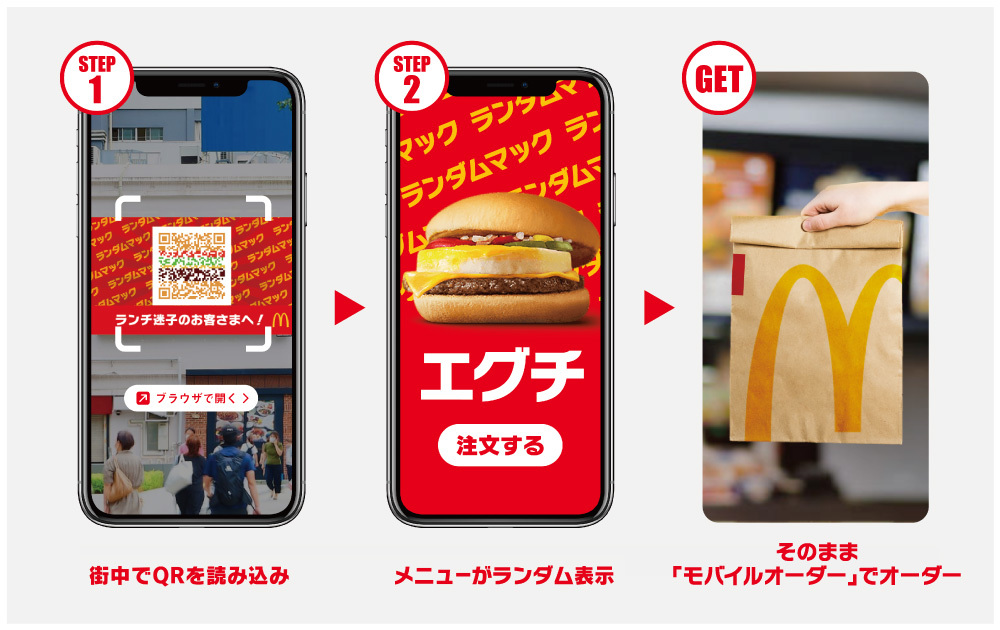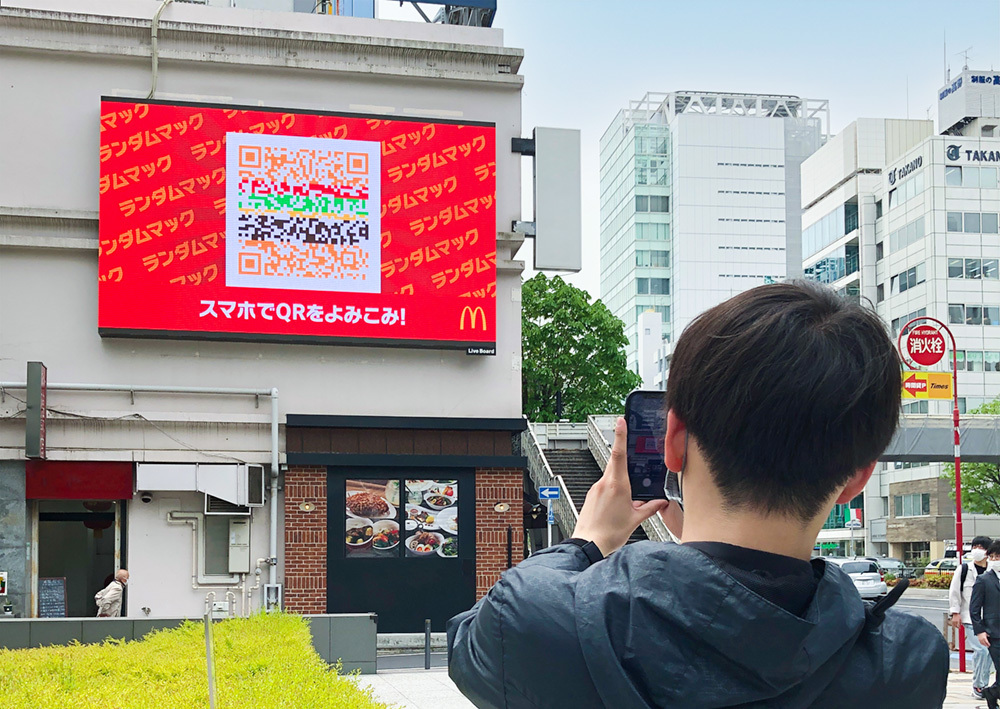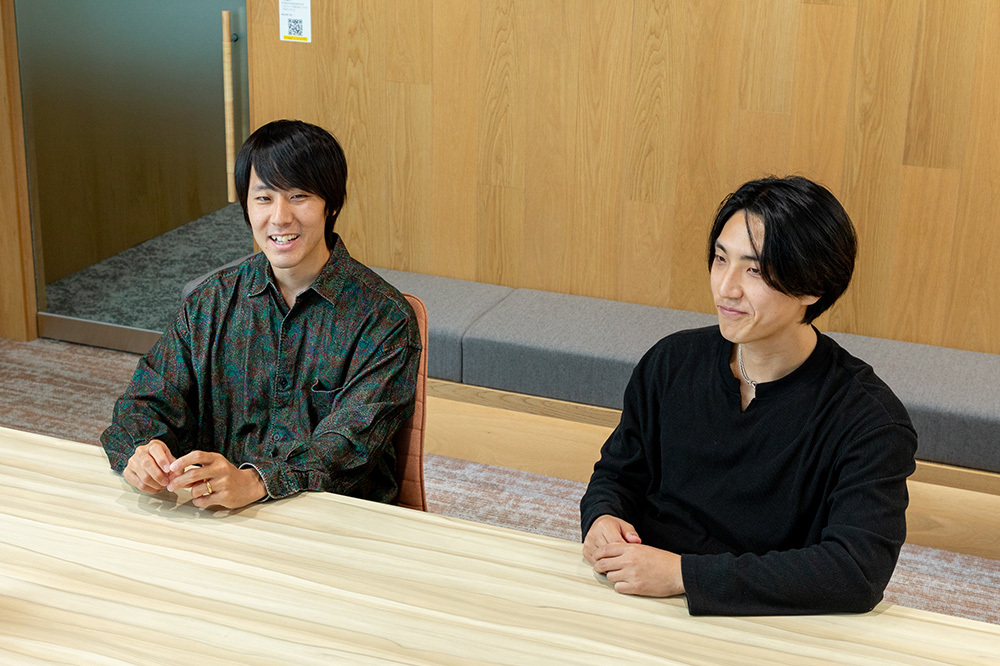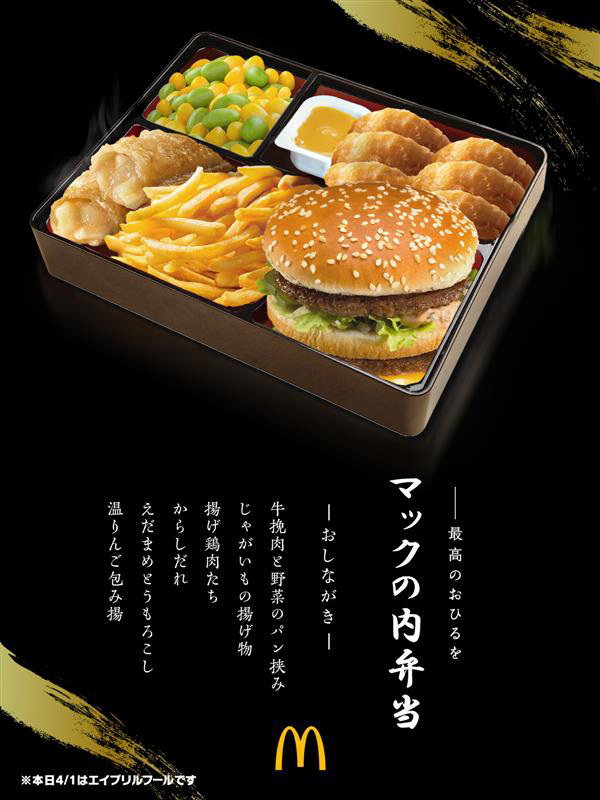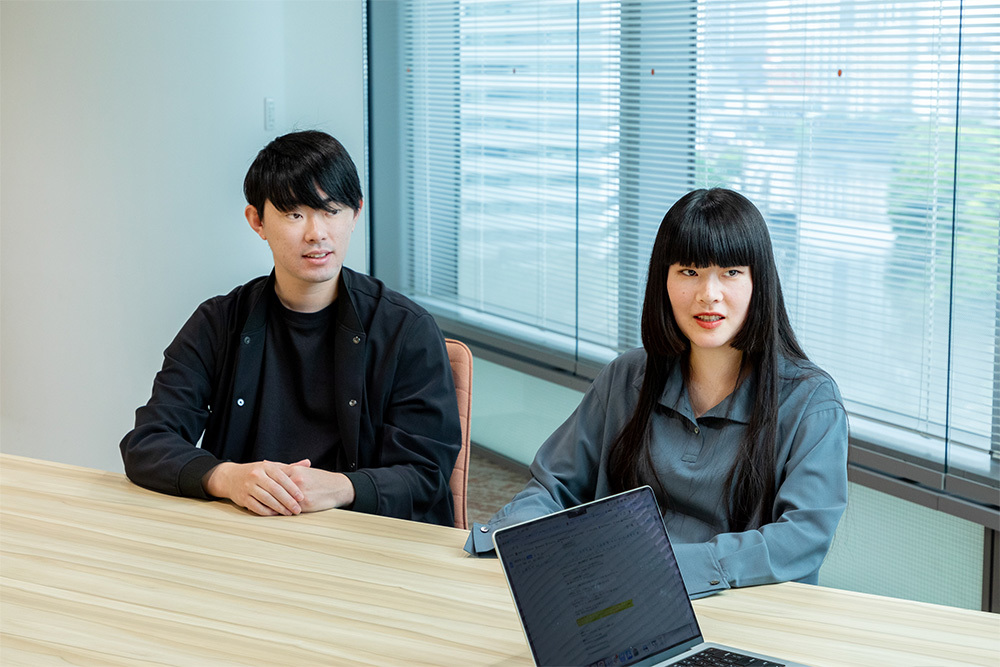
X (Twitter), a treasure trove of user insights, is now indispensable for building advertising campaigns. This series introduces the "4X" CX planning steps developed by X's creative strategy group "Next" and Dentsu Inc. through research on over 100 advertising campaigns ( see here for an overview of 4X).
This time, we focus on "Step 1: eXplore." Yuri Nakagawa of X interviewed creators from Dentsu Inc., who worked on McDonald's "Random Mac" project, about "how to discover target insights using X."
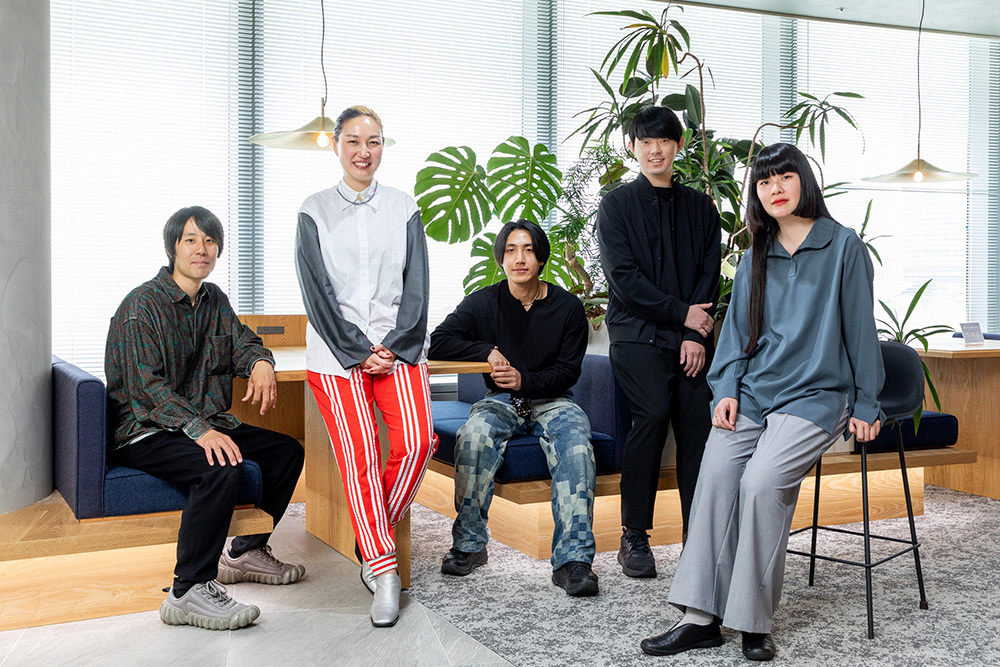
From left: Kei Konishi, Yuri Nakagawa, Ryohei Yatsuzaki, Kentaro Tsuji, Tamami Oobuchi
Discovering the insight: "McDonald's customers have fixed menu choices"
Nakagawa: Thank you for having us today. First, could you briefly introduce the project team?
Konishi: I'm Kei Konishi, Creative Director. The "Random Mac" project was planned by a team of young members, all in their 20s. Participating in today's discussion from that team are Art Director Ryuhei Yatsuzaki, Copywriter Kentaro Tsuji, and UI/UX Designer Tamami Oobuchi. "Random Mac" was a project we conducted in 2022; at the time, these three were in their first year at the company.
Nakagawa: So it was an idea from Generation Z that took shape. What kind of project was "Random Mac"?
Konishi: McDonald's approached us asking if we could combine their "Mobile Order" service—which allows ordering and payment via the official app—with "Hirumac" (a weekday lunchtime discount on regular sets) to create an unprecedented approach. They wanted us to brainstorm initiatives together.
So we came up with a concept where scanning a QR code displayed in ads would show either a single item or a set menu, like "Hot Apple Pie" or "Egg Cheese Burger Set." The random menu display helped customers choose and introduced them to items they might not have tried before. We created animated QR codes and displayed them on outdoor ads nationwide, as well as posted them on McDonald's official X account.
Nakagawa: How did this project come about?
Yatsuzaki: We thought placing eye-catching QR codes in various locations around town would create a strong visual impact as a way to drive traffic to the McDonald's app. While the idea of scanning a QR code to order a menu wasn't bad, there was a feeling that "we need an idea that motivates users a bit more."
Konishi: During discussions, someone suggested, "Wouldn't it be fun if scanning the QR code randomly recommended menu items?" That led us to wonder, "What do people usually order?"
Ōbuchi: I always end up ordering the cheeseburger (laughs), but I'd assumed people around me enjoyed different items, switching up their orders daily.
Konishi: Turns out, everyone was ordering pretty much the same things too. That led to the hypothesis: "People who use McDonald's tend to stick to the same menu items." We decided to test this by using X to look for insights.
Nakagawa: So you used X to test the hypothesis. Not just Konishi and his team, but many creators use X not just to find ideas for projects, but to verify the basis for an initial spark of inspiration.
Ōbuchi: Exactly. I think you need to be a bit strategic about how you search on X. For this project, simply typing "McDonald's menu fixed" wouldn't yield insights. So, when I searched "McDonald's recommendations," various posts came up.
Yatsuzaki: We found many posts where users were asking their followers for McDonald's menu recommendations. This showed us that many people are genuinely struggling to choose what to order, revealing a real, pressing insight.
Nakagawa: X users aren't posting with marketing in mind. The challenge is to get as close as possible to the language they casually use in their everyday posts. This requires search skills that match the user's perspective. How did the client react when you proposed the project?
Konishi: They were very interested. Especially when we presented the "menu stagnation" insight based on X posts, I could see the person in charge's expression change. If we'd just proposed the idea—"Let's put dynamic QR codes in various locations to display menus randomly"—without the X insights, they might have thought "That sounds interesting," but it probably wouldn't have led to implementation.
Ōbuchi: Showing the insight made them more receptive to the plan. But it wasn't quantitative data like "X% of people struggle with menu choices." Presenting it as "People are posting things like this on X about menu selection" allowed them to receive it as a relatable story.
Konishi: Quantitative surveys have predetermined questions, and results emerge within that framework. In contrast, when you gather a large number of individual "personal opinions" like on X, it might feel like a stronger insight. It becomes evidence of whether the idea we conceived is truly a "real-world issue."
Ōbuchi: As a teaser for the "Random Mac" campaign, we posted "I tend to order the same menu items..." on McDonald's official account. It garnered over 90,000 likes and collected voices of empathy regarding the psychology of "menu fixation."
Konishi: We estimate the "Random Mac" project ultimately reached over 28 million people, with over 20 million participants, contributing to 112% of McDonald's Japan's sales (compared to the same month the previous year). The entire project team truly felt how discovering insights on X led to this major success.
Exploring the intensity of niche topics over time
Nakagawa: Besides "Random Mac," are there other examples where insights were discovered on X?
Konishi: One insight about McDonald's users is that they perceive "McDonald's as a fun brand." This lowers the barrier for them to find our campaigns entertaining.
Tsuji: For example, on April 1, 2024, we posted on X announcing "McDonald's Bento Boxes Now Available." This was an April Fools' joke, yet it garnered over 230,000 likes.
Tsuji: I think the discussion took off because we really thought through what kind of lineup McDonald's would offer if it sold bento boxes, carefully selecting the menu items and paying attention to the visuals. But getting this many likes? That's definitely because of the existing foundation that "McDonald's is a fun brand."
Ōbuchi: McDonald's initiatives really hinge on whether they can tap into that sense of "affection users have for McDonald's," right?
Tsuji: McDonald's has a huge asset in the "accumulated experiences of its users" – so many people have used it, and there's immense context. You really feel that.
Nakagawa: McDonald's is a brand with truly massive user numbers, which is rare in a way. How about other projects?
Konishi: The more niche the audience, the more crucial it is to verify insights accurately. Something might be happening within your own circle, but you often don't know how it resonates with the wider world. In those cases, exploring insights on X is one approach.
This is also a McDonald's example: they revived a game from the feature phone era as content. I had actually played it myself, but I researched extensively to confirm if that specific game content was genuinely trending. It might have just been popular at my school. Back then, while online searches turned up various articles, I couldn't gauge how many people were actually interested.
Tsuji: X displays the date and time when a post was made, right? That's incredibly important. Seeing the raw energy and enthusiasm in a chronological timeline, alongside the dates from that era, really helps uncover insights.
Yatsuzaki: Things users feel nostalgic about and can relate to—like things they used to use a lot or games they played often—tend to gather a lot of posts.
Nakagawa: Niche things like feature phone games are rarely something people would go out of their way to talk about face-to-face. But X posts capture their thoughts and discoveries from that time. X is really useful for uncovering insights into niche topics.

Alongside discovering insights, you can also see fan reactions to projects.
Nakagawa: How do you all typically use X?
Konishi: When brainstorming projects together, we often ask, "Any interesting posts on X lately?" Regardless of the project's target audience or product, we share interesting posts we've found—like "quirky YouTubers" or "niche TV content"—in a completely open way.
Yatsuzaki: As an art director, I don't use it much for finding visual ideas. For me, it's mainly about discovering what's trending in the world and finding seeds for new projects—it's incredibly useful. It's especially invaluable when trying to figure out what young people are currently obsessed with.
Tsuji: I use it a lot for searching. I've been on X for a long time, and compared to other social media platforms, I think X is where people post the most genuine thoughts and where you can find the most user insights. I find what I'm looking for faster searching on X than on the web.
Nakagawa: Is searching the primary way you use X?
Tsuji: Yes. It's more like verifying hypotheses—taking what people vaguely imagine in their heads and visualizing it to confirm. It also leads to discovering something new near those insights. For example, sometimes you find an amazing post that hasn't gotten many likes, and in those moments, it feels like you've taken a shortcut straight to insights useful for planning.
Yatsuzaki: In terms of differences from other SNS, I think X is particularly overflowing with standalone text or text-and-image comedy contests. When exploring insights, things that resonate with users' nostalgia—like things they used to use a lot or games they used to play—tend to get especially good reactions.
Konishi: When I see something interesting on X, I hit "Like." The likes section becomes like a notebook for ideas, right?
Ōbuchi: During meetings, we sometimes pull ideas from the likes section.
Konishi: X also serves as one criterion when deciding which celebrities to hire. For example, even if someone is a super-famous celebrity with tons of followers, if there's little conversation about them, hiring them for an ad might not generate much buzz. Conversely, even if someone doesn't have an enormous follower count, if they have passionate fans, hiring them for an ad can sometimes increase conversation. We also check the average number of people reacting to a celebrity's various posts.
Nakagawa: So, regarding talent casting, you don't just rely on the follower count provided by casting agencies. You also look at the volume of engagement on their posts, essentially their "engagement rate," to make decisions.
Tsuji: If there were a concept like "active followers," it would be useful for client proposals.
Ōbuchi: When planning content-based campaigns, I make a point to carefully research the cultural aspects of the fanbase through X. In doing so, I often learn not just the atmosphere or temperature of the fans, but also the unwritten rules or boundaries that shouldn't be crossed, and ways to better tickle their fan spirit. For example, seeing things like "Fans would probably react strongly on X if this character did this" makes the campaign's resonance much clearer.
Nakagawa: So while exploring insights, you also gain visibility into how fans react to and discuss the project. Hearing your perspectives, it's clear that discovering insights on X is a major key to making a project break through. Thank you all for today.
